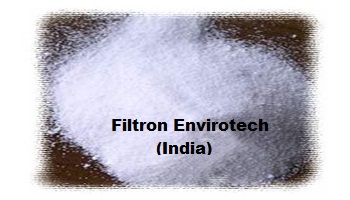Sodium Tri Poly Phosphate | STPP
The Sodium Tripolyphosphate that we provide is abbreviated as STPP and has a chemical formula Na5P3O10. The Sodium Tripolyphosphate is ideal for enhancing the performance of detergents. Besides, Sodium Tripolyphosphate is also used in Food Industry. We are the prominent Sodium Tripolyphosphate Suppliers in the domain. Sodium triphosphate (STP, sometimes STPP or sodium tripolyphosphate or TPP, is an inorganic compound with formula Na5P3O10. It is the sodium salt of the polyphosphatepenta-anion, which is the conjugate base of triphosphoric acid. It is produced on a large scale as a component of many domestic and industrial products, especially detergents. Environmental problems associated with eutrophication are attributed to its widespread use.

Uses In Detergents:
The majority of STPP is consumed as a component of commercial detergents. It serves as a "builder," industrial jargon for a water softener. In hard water (water that contains high concentrations of Mg2+ and Ca2+), detergents are deactivated. Being a highly charged chelating agent, TPP5- binds to dications tightly and prevents them from interfering with the sulfonate detergent.
Food Applications:
STPP is a preservative for seafood, meats, poultry, and animal feeds.
It is common in food production as E number E451. In foods, STPP is used as an emulsifier and to retain moisture. Many governments regulate the quantities allowed in foods, as it can substantially increase the sale weight of seafood in particular. The United States Food and Drug Administration lists STPP as "generally recognized as safe.".
Other Uses:
Other uses (hundreds of thousands of tons/year) include "ceramics, leather tanning (as masking agent and synthetic tanning agent - SYNTAN), anticaking, setting retarders, flame retardants, paper, anticorrosion pigments, textiles, rubber manufacture, fermentation,antifreeze."
TPP is used as a polyanion crosslinker in polysaccharide based drug delivery.
Health Effects:
Polyphosphates are hydrolyzed into simpler phosphates, which in moderate amounts are nutritious. For example, ATP, a related derivative of triphosphate, is essential for life. Thus, the toxicity of polyphosphates is low, as the lowest LD50 after oral administration is >1,000 mg/kg body weight. Similarly, no mutagenic or carcinogenic effects nor reproductive effects have been noted. Salts of polyphosphate anions are moderately irritating to skin and mucous membrane because they are mildly alkaline.
Our Range Of Products For Effluent Treatment Plants Chemicals (ETP)
Ferrous Sulphate | Hydrated Lime | Polyelectrolyte | Sodium Carbonate | Ammonium Hydroxide | Sodium Tri Poly Phosphate (STPP) | Caustic Soda Flakes & Lye | Sodium Bi Sulphite | Sodium Meta Bi Sulphite | Polyelectrolyte Anionic | Polyelectrolyte Cationic | Poly Aluminium Chloride Liquid (PAC Liquid) | Poly Aluminium Chloride Powder (PAC Powder) | Silicone Defoamers | Oil Based Defoamers | Organic Based Defoamers | Iron (III) Chloride Anhydrous | Ferric Chloride Liquid | 1,2,3-Benzotriazole | Tetra Potassium Pyro Phosphate (TKPP) | Tolyltriazole (TTA) | Ammonium Chloride | Phosphoric Acid | Chromium Oxide Green (COG) | Sodium Borohydride | Calcium Chloride | Antimony Trioxide | Triethanolamine (TEA) | Barium Sulphate | Calcium Carbonate | VIKRAM® PAC | Toluene
Categories
- Water Treatment Plants (WTP) Chemicals
- Effluent Treatment Plants Chemicals (ETP)
- Reverse Osmosis Plant Chemicals (RO)
- Swimming Pool Chemicals
- DM Plant Chemicals
- Industrial Chemicals
- Sewage Treatment Plant Chemicals (STP)
- Polyelectrolyte
- Activated Carbon Granular | Powder
- Alum (Ferric | Non Ferric | Powder | Slabs | Lumps)
- Filtration Media
- Hydrated Lime
- Silica Gel Pouches
- Biocides
- Super Absorbent Polymer (SAP)
- Sodium Hypo Chlorite | Liquid Bleach | Chlorine | Hypo
- Iron Removal Media
- TMT-15%
- Water De Coloring Agent | Color Removal Agent
- Cooling Tower Chemicals
- Boiler Chemicals
- Cosmetics Chemicals
